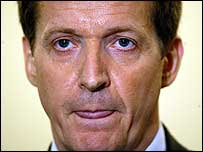United States exports of biological materials to IraqCompromising the credibility of international law
by Geoffrey HollandAbstractThis paper argues that the United States breached the Biological and Toxin Weapons Convention (BTWC) by supplying warfare-related biological materials to Iraq during the 1980s, at a time when that nation was at war with its neighbour, Iran. It is further argued that the United Kingdom has an obligation, not least due to its published policy on the issue, to formally report this breach to the United Nations Security Council. The case is made that if the UK, as a State Party to the BTWC, will not report this matter, then the Convention is not the legally binding international instrument it is claimed to be, thus compromising the credibility of international law. It may come as some surprise to the reader to learn – and as far as the author is aware this information has not previously been made public – that the anthrax threat from Iraq, a repeatedly cited reason for the 2003 invasion of that country, actually originated from a dead cow in South Oxfordshire.
[]
The British origin of anthrax strain 14578 – “Vollum” strainAnthrax strain 14578 may be found listed in past ATCC catalogues, in which the company’s ordering procedures explain that any request for it (and other pathogenic agents) “should be made on the institution’s official stationery (purchase order) and signed by the director of the institution, the chairman of the department concerned, or the scientist in charge of the project”.[43] So, presumably, ATCC files will hold copies of Iraq’s original purchase orders. Such back-up documents do not appear to have been supplied to Senator Riegle in 1994, but should now be produced during a proper investigation under the auspices of the United Nations Security Council.
Each strain in the ATCC catalogue is listed together with its known history – or rather the individuals who have maintained the strain over the years are named in succession. Anthrax strain 14578 appears to have been deposited with ATCC after being held by P H A Sneath, H M Darlow, P Fildes, R L Vollum, and originally Dunkin.[44] So, who are these people through whose hands this anthrax apparently passed en-route to the ATCC and thence to Saddam Hussein’s Iraq, from where it became the principal element in the widely trumpeted ‘forty-five minute threat’ which provided the pretext for the invasion of Iraq in 2003?
[]
Dr Fildes obtained this anthrax from Prof R L Vollum – Professor of Bacteriology at Oxford University – who had ‘isolated’ the anthrax strain, which was consequently named after him. According to Martin Hugh-Jones:
“Fildes, as a result of perceived German BW research, was asked to initiate research at MRE Porton on B. anthracis as a possible BW weapon strain; probably 1941. I suspect that it was through the establishment old boy net, and Oxford being Oxford, he approached Vollum for any cultures, who sent him the culture from this dead Oxfordshire cow. And in the usual way of microbiologists that culture was then labeled "Vollum." For some 18+ months it was used in animal experiments with sheep at Porton with modest success. Then they moved to the experiments at Gruinard island, on south Wales beaches, and elsewhere, and the development of the 4-lb bomb configuration, US involvement and so on.”[49]
[]
And this is when and where the anthrax, shortly to become known as Vollum strain, and thereafter ATCC strain 14578, originated. Again according to Martin Hugh-Jones:
“In, I believe, 1937 a cow died in south Oxfordshire and the owner's vet sent samples to Compton for diagnosis. ... And Dunkin's people diagnosed anthrax. Dunkin was a member of the Royal Society and presumably The Athenaeum. Vollum, Professor of Bacteriology at Oxford, needed a culture of B. anthracis, presumably for a class project as his name is otherwise missing from the anthrax bibliography and asked Dunkin if he had any. He did; he provided this culture…”[52]
Therefore, the threat we were told we faced from Iraq, and which formed the basis for the 2003 invasion of that country, actually originated – probably in 1937 – from a dead cow in South Oxfordshire.[53]
[]
http://www.globalresearch.ca/index.php?context=viewArticle&code=HOL20050707&articleId=655




















